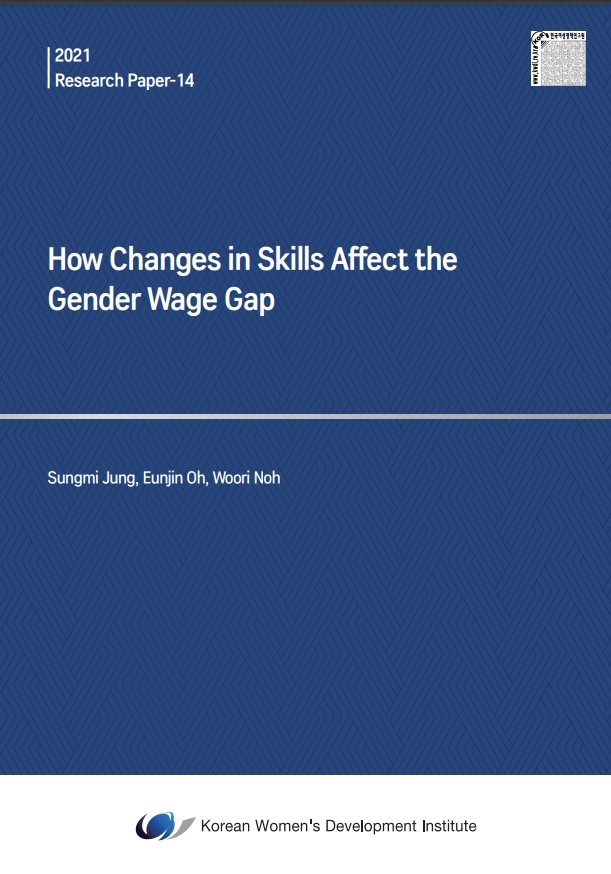Report
| How Changes in Skills Affect the Gender Wage Gap | |||
|---|---|---|---|
| Type | Basic | Period | 2021 |
| Manager | Sungmi Jung | Date | 2021-11-01 |
| Fiie | 14_숙련변화에 따른 성별 임금격차에 관한 연구(보이스아이).pdf ( 1.34 MB ) | ||
|
Abstract A study on the gender wage gap Sungmi Jung Eunjin Oh Woori Noh
This study directly measured the skills that are highly related to job characteristics and wages, and analyzed the relationship between job change and wages according to skills, and the effect on the gender wage gap. The factor analysis of Korean job information (KNOW) was defined as three categories : cognitive skill, functional skill, and physical skill. The analysis results are as follows. First, it was confirmed that there are gender differences in the skills required in the labor market. Since 2008, the level of cognitive skills of women has increased, and the market demand for women's cognitive high skills has increased significantly. In addition, there has been an increase in the demand for functional skills of women over college graduates. In particular, the demand for functional skills in professional and white-collar workers has increased significantly, and the skills required for the profession have changed. Second, as a result of analyzing skill level and job fluctuations, a tendency to focus on specific skills differently by gender was found. In women, cognitive skills were centered on high skills, and functional skills and physical skills were centered on intermediate skills. On the other hand, in men, cognitive skill and physical skill were concentrated to medium skill, and functional skill to high skill. Third, as a result of analyzing the relationship between wage and skill, cognitive skill and functional skill had a positive relationship with wage, but physical skill had a negative relationship for both men and women. Also, as for the influence of skill on wage, cognitive skill had the greatest effect on wage for both men and women. However, in a trend, the influence of cognitive skills in women has weakened since 2016, and the influence of functional skills has steadily increased since 2008. On the other hand, for men, there was not much change. In other words, the effect of functional skills on women's wages is growing. Fourth, the gender wage gap by skill level is decreasing, but it is still high. Even after controlling for characteristics, the gender wage gap was about 7 to 19%. Finally, as a result of the decomposition of the wage gap, cognitive skill had the greatest impact on the reduction of the gender wage gap since 2008. This is due to the increase in the number of highly skilled women among cognitive skills. However, as a result of decomposing the wage gap for each year, it was found that functional skills explained more of the gender wage gap than cognitive skills. As a result of the analysis so far, the strengthening of women's functional skills and the supply of labor that can support the increasing market demand are expected to have a positive effect on the reduction of the gender wage gap in the long term.
Research areas: Labor?Employment Keywords: Skills, Variations in labor demand, Labor wage by skill type, Gender wage gap |
|||
